The best flashlight
By Doug Mahoney
This post was done in partnership with The Sweethome, a buyer’s guide to the best homewares. When readers choose to buy The Sweethome’s independently chosen editorial picks, it may earn affiliate commissions that support its work. Read the full article here.
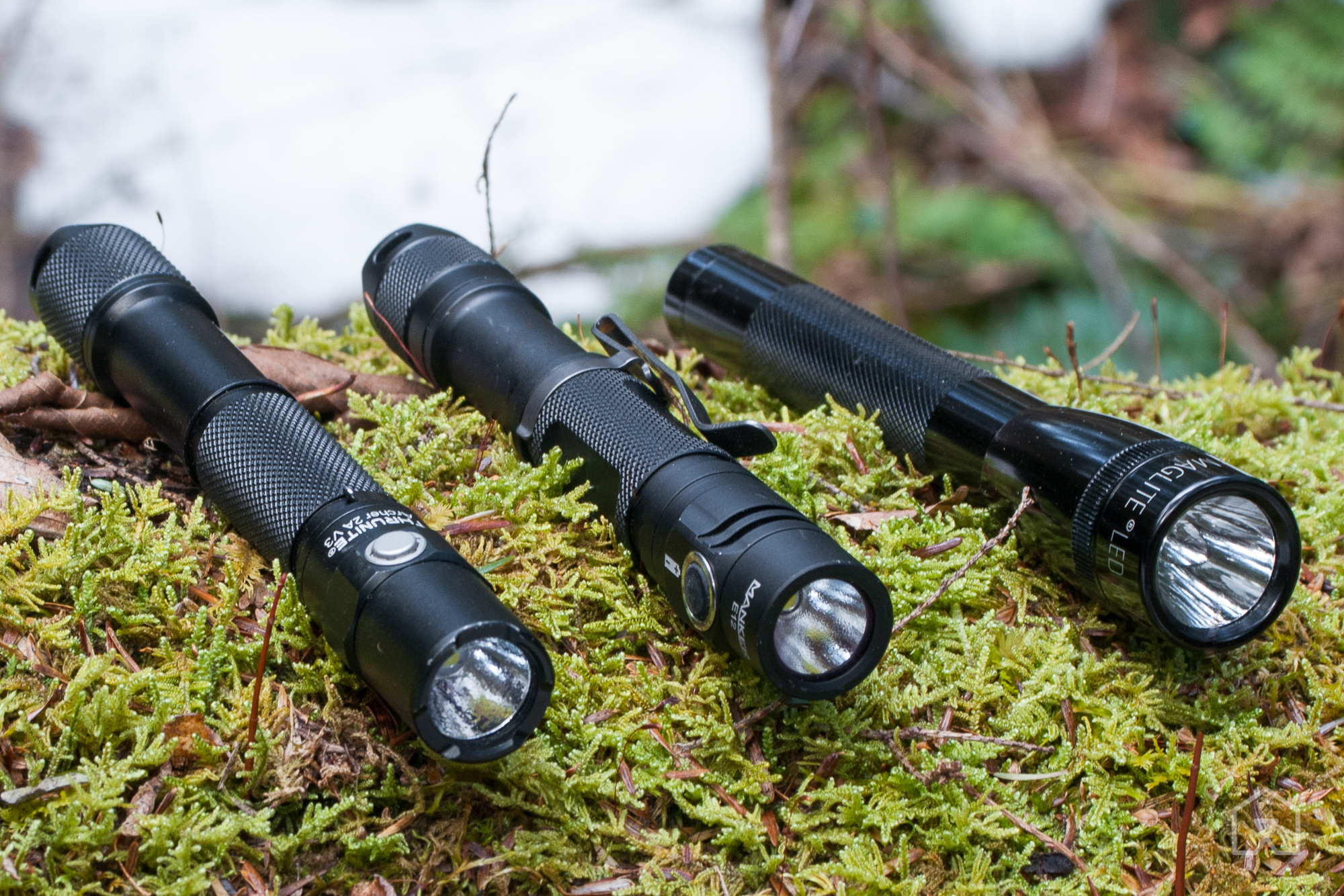
After spending three weeks in the New Hampshire woods with 23 flashlights, draining almost 80 batteries, researching the topic for over 50 hours, reading through countless threads at flashlight enthusiast forums, and speaking to a man who has personally reviewed almost 200 flashlights, the best one for most people is the ThruNite Archer 2A V3.
How we picked and tested
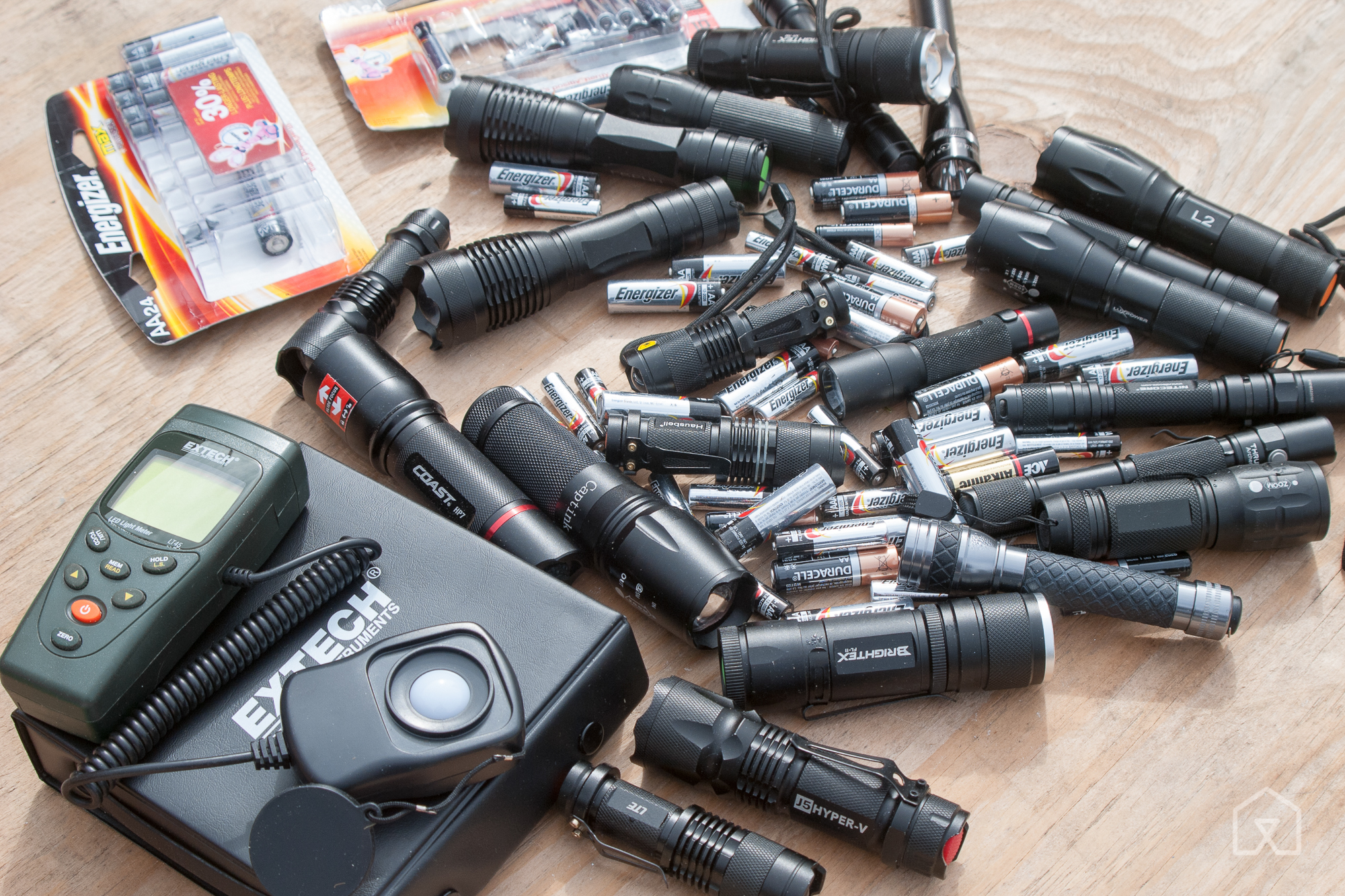
Flashlights can get very expensive, so we set a price limit of about $40. At this price, we hoped to find an entry-level light that offered some of the most important features standard on higher-end lights. Those included a wide, consistent beam, a selection of brightness levels that included a very low “moonlight” setting (aka “firefly” in some models), and a strobe feature that was easy to avoid cycling through in regular use—it’s useful in emergencies, but unnecessary and blinding the rest of the time. We sought models that use common, widely available AA batteries, as well as a waterproof design that could withstand a short drop and wouldn’t roll off a table.
Flashlights have either a reflector or a zoom lens, which dictates the light’s beam pattern—basically, how the light looks as it projects from the flashlight. We prefer reflectors over zoom lenses. Reflectors produce both a center hot spot of concentrated light and a lesser wide-diameter light around it (called the spill beam). Unlike a reflector, the zoom can’t show both the concentrated hot spot and spill beam at the same time. (It’s pretty telling that zoom-style lenses are disparagingly referred to by enthusiasts as “zoomies.”)
To look at battery drain over time and comparative light output, we set up a simple “bounce test.” Using an Extech LT45 LED Light Meter and flashlights loaded with new Energizer Max batteries, we positioned each light inside a large sealed box with the flashlight at one end shining across the box onto its opposite wall, and took readings at regular intervals. To learn more about this test, please read our full guide.
We had other ideas for structured tests, but we took a step back and decided on a more holistic approach to our testing. Instead of taking more meter readings in a sealed lab-like dark room, we spent night after night after night wandering around the dark New Hampshire woods. We felt this unstructured testing gave us the most useful gauge of overall usability, beam spread, and beam distance.
Our pick
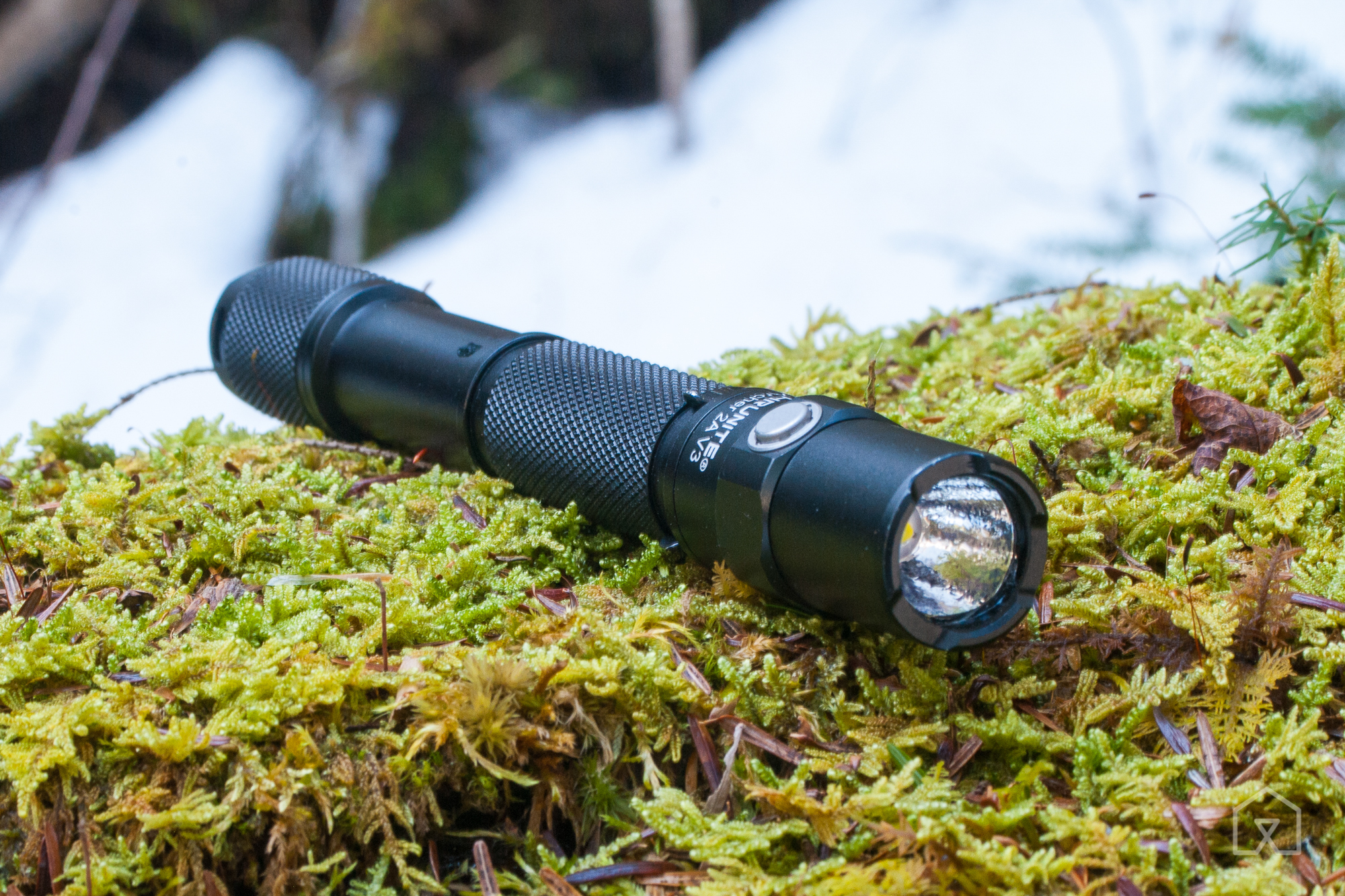
The ThruNite Archer 2A V3 is in many ways like a high-end flashlight at an affordable price. It has four brightness levels—one of which is the very useful, very low firefly mode. The strobe setting is not part of the brightness toggle so it doesn’t get in the way of regular use. Like most of the better lights we found, the beam simultaneously projects a long-distance hot spot and a dimmer wide-angle light, which gives a great view of the surroundings. It has a two-year free replacement if “problems develop with normal use.” Beyond that is a lifetime limited maintenance policy.
The ThruNite has an interesting two-button interface. At the rear of the light is a “tail switch” that turns it on and off. Once the light is on, the brightness levels are controlled by a second button up at the head of the light. The ThruNite also has what’s called “momentary on,” which means that the light activates with a half press of the tail switch and stays on for as long as the switch is held.
For durability, the ThruNite has a high-quality fit and finish and can handle full submersion in water and a 1½-meter drop. We also like that the body is designed so that it can stand on its end, or “tailstand,” and won’t roll off a table.
Similar design, slightly limited
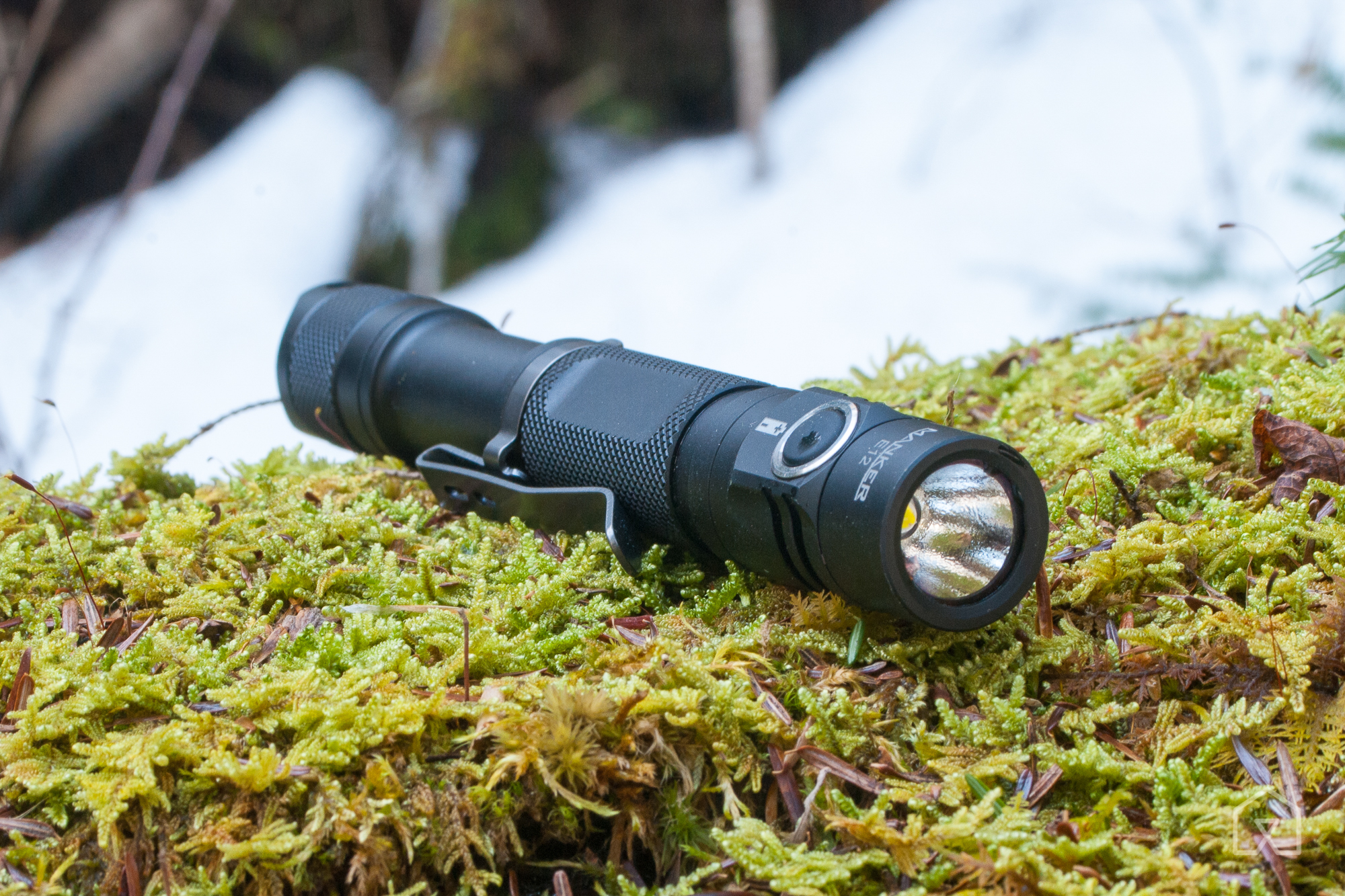
If the ThruNite is not available, we recommend the Manker E12. Almost everything we like about the ThruNite is present in the Manker, and in fact it has a few minor aspects to it that we even liked a little better. But we felt that the wider range of brightness levels found in the ThruNite offers more flexibility. The Manker’s lowest moon mode is also visibly brighter than the ThruNite’s. We’re convinced that these fairly minor points would be noticed only with the lights side by side and that anyone ending up with the Manker will be wholly satisfied.
The Manker has the same two-button interface with the four brightness levels and the hidden strobe function. It has the same momentary-on feature. It also has a similar high-quality look and feel, including the knurled body, the antiroll design and the ability to tailstand. We liked that the Manker is about ½-inch shorter than the ThruNite and that the pocket clip has a little more heft to it. According to the manufacturer specs, the Manker also has a slightly deeper waterproof ability, going to 2 meters, instead of 1½ meters like the ThruNite.
A basic flashlight for about $25
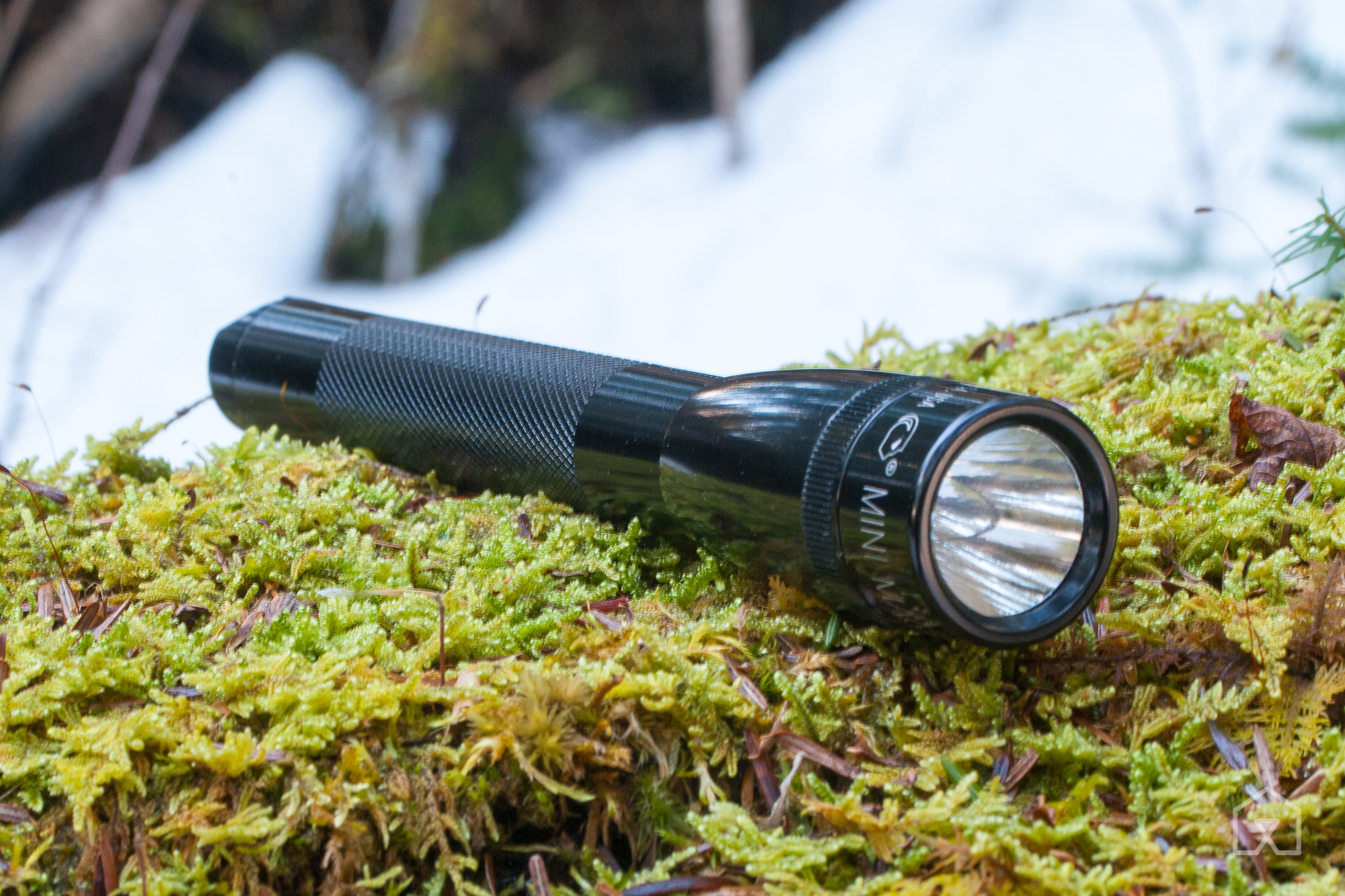
If the ThruNite and Manker are priced too high, or if you just want a no-frills, regular old flashlight, we recommend the Mini Maglite Pro. This two-AA light has a reflector, so it provides the wide beam with the center spot that we like. Compared with the ThruNite, the Maglite is not nearly as bright, and it lacks much of what we like about our main pick—it doesn’t have multiple brightness settings, nor a two-button interface, and it has fewer features overall.
The Maglite’s modes consist of on and off, with a single brightness level and no strobe feature. It’s also missing a pocket clip, the antiroll design, and the consistency of the light output (our tests showed a steady fading of the light). It has no buttons, so it activates with a twist of the head, a design that often caused the light to turn on in a pocket. Twisting to turn it on is an awkward motion and can be done with one hand after a little practice, but it’s done more easily with two.
We believe most people would be happier with our pick or runner-up, but the Maglite is adequate if you want to spend around $25. We wanted to be able to suggest an even more affordable option, but there wasn’t a model we could reliably recommend—for the details on why, please see “why we can’t recommend a cheaper flashlight” in our full guide.
This guide may have been updated by The Sweethome. To see the current recommendation, please go here.
Note from The Sweethome: When readers choose to buy our independently chosen editorial picks, we may earn affiliate commissions that support our work.
(39)















